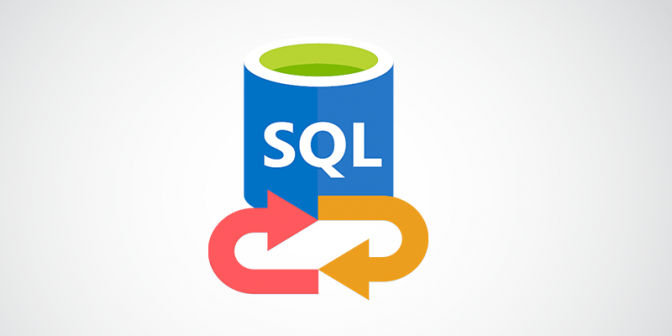Interview Question For SQL: Most Asked Question In Interview
Interview Question For SQL: Set 1
1) What is SQL?
SQL stands for the Structured Query Language. SQL is a standard query language used for maintaining the relational database and perform many different operations of data manipulation on the data. SQL initially was invented in 1970. It is a database language used for database creation, deletion, fetching rows and modifying rows, etc. sometimes it is pronounced as ‘sequel.’
2. History of SQL
It appeared in 1974. SQL is one of the often used languages for maintaining the relational database. SQL. In 1986 SQL become the standard of American National Standards Institute (ANSI) and ISO(International Organization for Standardization) in 1987.
3.What are the usages of SQL?
- SQL is responsible for maintaining the relational data and the data structures present in the database.
- To execute queries against a database
- To retrieve data from a database
- To inserts records in a database
- To updates records in a database
- To delete records from a database
- To create new databases
- To create new tables in a database
- To create views in a database
- To perform complex operations on the database.
4. Does SQL support programming?
SQL refers to the Standard Query Language, which is not actually the programming language. SQL doesn’t have a loop, Conditional statement, logical operations, it can not be used for anything other than data manipulation. It is used like commanding (Query) language to access databases.
5. What are the subsets of SQL?
There is three significant subset of the SQL:
- Data definition language (DDL):DDL is used to define the data structure it consists of the commands like CREATE, ALTER, DROP, etc.
- Data manipulation language (DML):DML is used to manipulate already existing data in the database. The commands in this category are SELECT, UPDATE, INSERT, etc.
- Data control language (DCL):DCL is used to control access to data in the database and includes commands such as GRANT, REVOKE.
6. What is a Data Definition Language?
Data definition language (DDL) is the subset of the database which defines the data structure of the database in the initial stage when the database is about to be created. It consists of the following commands: CREATE, ALTER and DELETE database objects such as schema, tables, view, sequence, etc.
7. What is a Data Manipulation Language?
Data manipulation language makes the user able to retrieve and manipulate data. It is used to perform the following operations.
- Insert data into database through INSERT command.
- Retrieve data from the database through SELECT command.
- Update data in the database through UPDATE command.
- Delete data from the database through DELETE command.
8. What is Data Control Language?
Data control language allows you to control access to the database. DCL is the only subset of the database which decides that what part of the database should be accessed by which user at what point of time. It includes two commands GRANT and REVOKE.
- GRANT: to grant the specific user to perform a particular task
- REVOKE: to cancel previously denied or granted permissions.
9. What are joins in SQL?
A JOIN clause is used to combine rows from two or more tables, based on a related column between them. It is used to merge two tables or retrieve data from there. There are 4 joins in SQL namely:
- Inner Join
- Right Join
- Left Join
- Full Join
10. What is the difference between CHAR and VARCHAR2 datatype in SQL?
Both Char and Varchar2 are used for characters datatype but varchar2 is used for character strings of variable length whereas Char is used for strings of fixed length. For example, char(10) can only store 10 characters and will not be able to store a string of any other length whereas varchar2(10) can store any length i.e 6,8,2 in this variable. This is Important Interview Question For SQL.
11. What is a Primary key?
- A Primary key is a column (or collection of columns) or a set of columns that uniquely identifies each row in the table.
- Uniquely identifies a single row in the table
- Null values not allowed
- Example- In the Student table, Stu_ID is the primary key.
12. What is the difference between SQL and MySQL?
SQL is a standard language which stands for Structured Query Language based on the English language whereas MySQL is a database management system. SQL is the core of relational database which is used for accessing and managing database, MySQL is an RDMS (Relational Database Management System) such as SQL Server, Informix etc. This is Important Interview Question For SQL.
13. What is a Foreign key?
- Foreign key maintains referential integrity by enforcing a link between the data in two tables.
- The foreign key in the child table references the primary key in the parent table.
- The foreign key constraint prevents actions that would destroy links between the child and parent tables.
14. What do you mean by data integrity
Data Integrity defines the accuracy as well as the consistency of the data stored in a database. It also defines integrity constraints to enforce business rules on the data when it is entered into an application or a database.
15.What is the difference between clustered and non clustered index in SQL?
The differences between the clustered and non clustered index in SQL are :
- Clustered index is used for easy retrieval of data from the database and its faster whereas reading from non clustered index is relatively slower.
- Clustered index alters the way records are stored in a database as it sorts out rows by the column which is set to be clustered index whereas in a non clustered index, it does not alter the way it was stored but it creates a separate object within a table which points back to the original table rows after searching.
- One table can only have one clustered index whereas it can have many non clustered index.
16. What do you mean by Denormalization
Denormalization refers to a technique which is used to access data from higher to lower forms of a database. It helps the database managers to increase the performance of the entire infrastructure as it introduces redundancy into a table. It adds the redundant data into a table by incorporating database queries that combine data from various tables into a single table. This is Important Interview Question For SQL.
17. How can you put separate the Rename and the Alias?
A permanent name which is given to a table or a column in SQL is considered as “Rename” whereas the temporary name given to the same is considered as “Alias”
18. What do you know about the NULL value in the SQL
It is basically a field which doesn’t have any value in SQL. It is totally different from that of a zero value and must not be put equal or confused with the same. These fields are left blank during the creation of the records.
19. What do you know about the stored procedure?
It is nothing but an array of some important SQL statements that are stored in the database and are responsible for performing a specific task.
20. Name the types of Indexes of which are available in SQL
There are three important types of Indexes and they are
- Unique Index
- Clustered Index
- Non-Clustered Index.
21. What are SQL Injections? And How to Prevent SQL Injection Attacks?
It is a mechanism of getting secure data from the database. SQL Injection Attacks:
- By providing proper validations for input fields.
- By using parameterized queries.
- By using stored procedures.
- By using frequent code reviews.
- We must not display database error messages in front end.
- An SQL injection is a code injection technique, used to attack data-driven applications.
22. What is Tuple?
Tuples are the members of a relation. An entity type having attributes can be represented by a set of these attributes called tuple.This is Important Interview Question For SQL
23. What is Query & Query Language?
A query is a statement requesting the retrieval of information.
The portion of dimly that involves information retrieval is called a query language.
24. What is Deadlocking?
It is the situation where two transactions are waiting for other to release a lock on an item.
25. What is decryption?
Taking encoded text and converting it into text that you are able to read
High Paying Jobs For Database Administrator: Click here
If You Want To Get More Daily Such Interview Questions Updates Then Then Join the Telegram Group From Above Link Also Press Red Bell Icon At The Left Side of Page To Subscribe our Updates.
Join Telegram Group of Daily Jobs Updates for 2010-2021 Batch: Click Here
Why You’re Not Getting Response From Recruiter?: Click here
Top 5 High Salary Jobs in India IT Sector 2020: Click here
How To Get a Job Easily: Professional Advice For Job Seekers: Click here
Cognizant Latest News: Up To 20K+ Employees Will Be Hired: Click here
Jio vs Airtel vs Vodafone- Idea 2 Gb Per Day Data Plan Comparison: Click here
Lenovo Legion Three Gaming Laptops Launched In India: Click here
COVID-19 Live Tracker India & Coronavirus Live Update: Click here
Career Tips for Freshers: Top 7 Hacks To Land Your Target Job: Click here
Feel Like Demotivated? Check Out our Motivation For You: Click here
List of Best Sites To Watch Free Movies Online in 2020: Click here
5 Proven Tips For How To Look Beautiful and Attractive: Click here
Home Workouts During The Lockdown For Fitness Freaks: Click here
Google Certification 100,000 Courses For Online Certificates: Click here

































